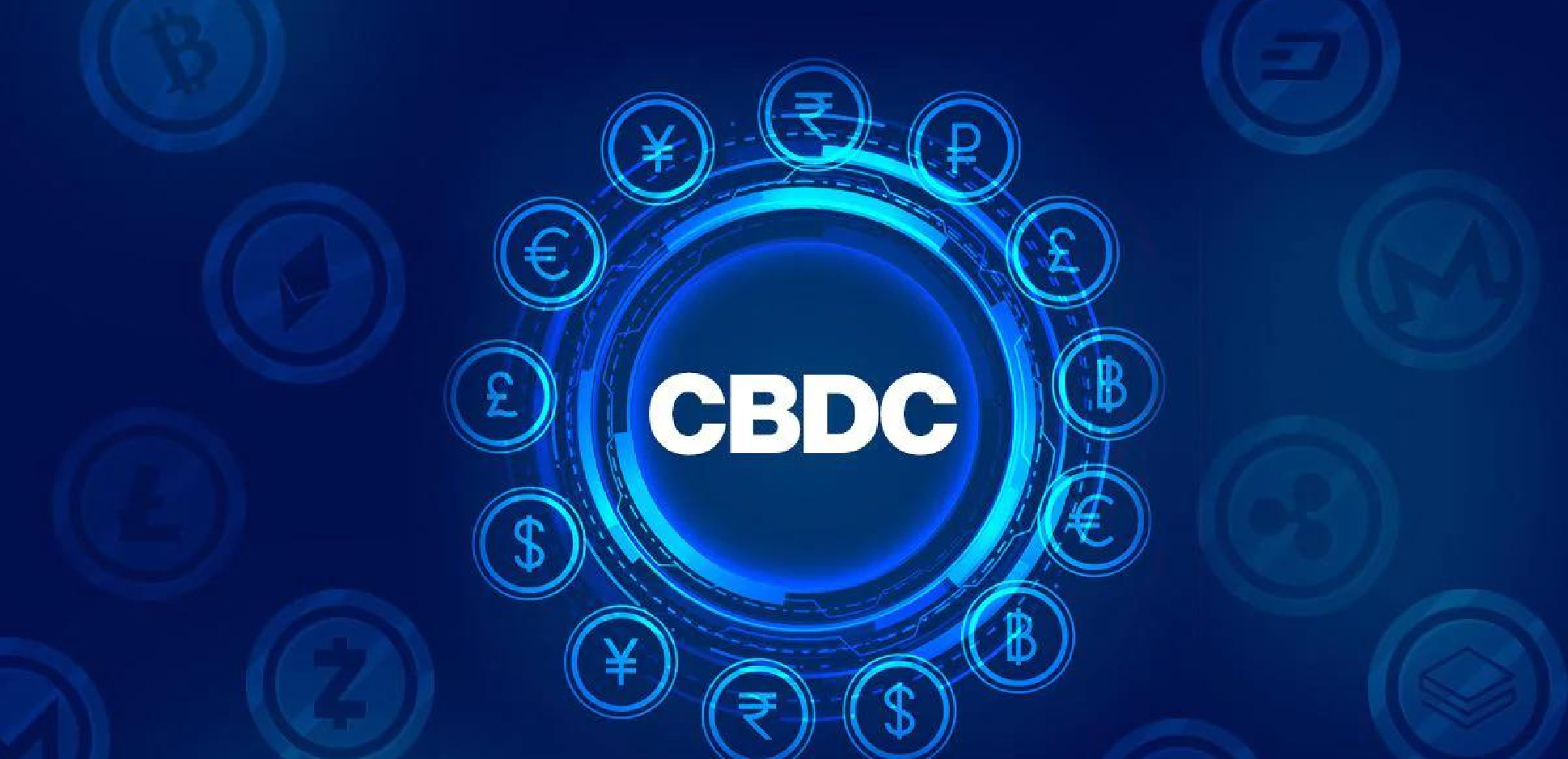Do you ever buy something from the dark web via CBDC? Then you must know that the CBDC system has the potential to give authorities more data on users and their transactions. Also, facilitate detection, supervision monitoring, and law enforcement efforts that reveal users’ privacy when they use dark web transactions via CBDC.
All this unlocks the central bank to disapproval that CBDC could be used as a following tool, not only by itself. But by banks and outflows, service workers are part of the CBDC structure.
However, users mandate cash-like privacy fortifications from CBDC, which may be upset by guidelines. But new technology resolutions may allow high notches of privacy while fulfilling protocols.
So here in this post, we will walk through everything you have to know about CBDC, how it works, how it cancels privacy on the dark web, and how this system can ensure privacy in its design for making more secrecy in transactions.
Key Take Aways
• A CBDC: Central Bank Digital Currency would be an obligation of a National Reserve. Distinct paper dollars would offer neither confidentiality protections nor the decisiveness cash offers.
• Research shown by the isolated sector that contains numerous OMFIF members often points to citizens’ disquiet in many regions about the threat to freedom by a CBDC monitoring their dealings in real-time.
• The existing wholesale and retail payment systems face an intricate cybersecurity landscape and characterize a main attack point for prepared crime and state-sponsored actors. The cybersecurity risks modeled by CBDCs must be assessed comparative to this landscape.
• The main purpose of the CBDC system is to offer businesses, customers, and potential users of dark web privacy, transferability, convenience, user-friendliness, and financial sanctuary. And reducing the charge of preservation that a complex economic system requires and reducing cross-border transaction charges.
What is CBDC: Central Bank Digital Currency
The central bank digital currencies are a type of digital currency allotted by a country’s central bank, which is similar to cryptocurrencies. But the central bank fixes its worth, which supports financial services for a nation’s government, and its commercial banking system sets monetary policy and issue currency.
However, CBDCs are the digital form of a government-allotted currency not fixed to physical goods. But this currency is equal to the country’s authorization currency.
The most popular central banks are the US Federal Reserve System, the Swiss National Bank, the Bank of Japan, the Bank of England, the People’s Bank of China, the Deutsche Bundesbank of Germany, the European central bank, and the Bank of Canada.
Currently, there are 11 regions with CBDCs, including China, Russia, Grenada, Nigeria, Uruguay, Thailand, Iran, Antigua and Barbuda, Bahamas, Monserrat, Dominica, St. Vincent and the Grenadines, St. Kitts and Nevis, and Saint Lucia. Many regions now have developed the CBDC program as they research ways to transition to digital currencies.
How does CBDC Work?

A central bank digital currency works similarly to fiat currency. It is like a digital payment structure letting users send and receive promptly wherever. CBDC is not only a means of reimbursement but also supplies the worth of money.
We exchange money by electronic means daily via banks, digital wallets, and card payments, but there is a variance. Most digital payments are check instructions for a bank to pay real money from users’ accounts. This means many intricate actors are enacting the transactions clearing payments, and managing millions of individual accounts.
However, a central bank digital currency contains decentralized digital currencies like Bitcoin (BTC) and Ethereum (ETH) and is more like cash itself in excision in the mid man. It looks like the currency travels directly from user to user or from customer to seller like a coin.
Both cryptocurrencies and CBDC depend on networked microelectronic resources to trail and authenticate transactions. Most crypto resources are distributed and anonymized. But the CBDC, a central database ultimately measured by a central bank, ensues the currency and offers each dollar or euro with a distinct serial figure to recognize it.
Central banks will frequently bolt the electronic currency to their current national currency. Since nationwide currencies currently are, fiat CBDCs are, on the other hand, termed digital fiat currencies.
How does a CBDC Cancel Privacy on the Dark Web?

Securing the basic storage and transfer cost security contains privacy and anonymity features. However, threats must be eased to defend the integrity of reserves and the confidentiality and anonymity of users.
But unlike paper dollars, the CBDC would offer neither the privacy fortifications and not the conclusiveness that money offers. The CBDC offers direct digital accountability, a digital tether between citizens and the central bank. That makes CBDCs a radical departure from the digital Dollars millions of Americans currently use.
So, a Central bank digital currency would not offer exclusive profits compared to current technologies and would probably pose serious risks to a user’s privacy on the dark web.
To understand how CBDC cancels the privacy on the dark web, we have shared the details on how CBDC privacy work and how it can create a privacy issue for dark web or deep web users.
Privacy on CBDC
The CBDC will have absolute control over the rules and regulations. That will fix the use of that expression of central bank accountability, and we will have the technology to impose that.
The threat to autonomy that a CBDC could pose is strictly related to its threat to confidentiality. With so many statistics in hand, a CBDC would offer uncountable prospects for the government to control citizens’ financial activities.
Below we have described how CBDC controls a user’s financial activities.
Economic Control of CBDC Can Cancel Privacy on the Dark Web
The government has familiar that restricting someone’s financial possessions is one of the most effective ways to deadbolt them out of the world. However, a CBDC system can make the process easier and quicker for governments by creating a direct link between people and the government.
The data from CBDC system usage allows for the building of credit to reduce risk data asymmetry in lending. The system can rise completely if bank deposit liquidity risk is small and the size and comparative wealth of the earlier unbanked population is big.
Interest Rate
central banks of Denmark, Japan, Sweden, and Switzerland have implemented negative interest rate policies (NIRP). Markets believe that long-term nominal interest rates could re-emerge in the future, possibly in monetary areas where it is not currently applied.
Supplying zero paid CBDC without restrictions on access or quantities would indicate the end of NIRP. It would also suggest that NIRP would no longer be possible in the future. as issuing would likely lift long-term nominal profits, even those in established territories.
In that case, the CBDC offers a zero return; no other financial instrument can profit from a negative rate as its holder would ancillary it with CBDC. However, the negative interest rate can raise the maximum amount on user holdings of CBDC and limit the number of payments, as the recipient’s holdings of CBDC must be known to complete the payments.
Moreover, the interest rate is often thought of in items of positive rates. A CBDC could let policymakers also set negative rates. Consequently, a negative interest rate would result in people losing money.
CBDC Programming Skills Cancel the Privacy on the Dark Web
The programming skill of CBDC could mean that users would be prohibited from buying certain goods or limited in how much they might purchase. Policymakers try to curb drinking by limiting nighty alcohol purchases or prohibiting purchases for people with alcohol-related faults.
The CBDC lets the government agencies and private sectors program these policies to function properly. That can view that money can be exactly targeted for what users can own and what users can do.
Confidentiality
In CBDC, confidentiality decodes into the privacy of holding transactions and identities. Data storage should be negligible as required to function in a Central Bank Digital Currency system. The outflow of intimate data vividly rises the cruelty of a breach.
While knowing the customer requirements and anti-money laundering and anti-terrorist financing regulation may involve storage and linking personally recognizable information to worthwhile stores and dealings.
The Risk Profile of CBDC Cancels the Privacy on the Dark Web
From a privacy and security perspective, the system is tied to the store’s location of value. Systems storing the charge locally on forward-facing components must concentrate on protecting end-user policies and applets from security threats. At the same time, systems where the value is kept remotely must focus more on the sanctuary back-end structures.
However, a hybrid design that links both local and remote stores of worth onto a united CBDC system may exploit serviceability. But experience enlarged system hazards due to a transformation of threat routes.
While certain characteristics of CBDC are correspondingly private depending on where the value is kept, online payments are simple with centralized arrangements. At the same time, offline transactions are simple to implement with dedicated devices. Privacy of transactions is another characteristic to contemplate, as local store-of-value devices may implant deal antiquity.
Credit Availability
Paying a CBDC elevates the disintermediation risk since it makes the CBDC a perfect substitute for all types of deposits and other low risks assets. Including shares in money market mutual funds, treasury bills, and other short-term instruments can reduce credit availability or raise credit costs for businesses and governments.
That is why a CBDC challenges both the function and future of financial markets by dropping credit accessibility and dis-arbitrating banks.
Why does a CBDC Cancel Privacy on the Dark Web?

Advocates often describe the central bank digital currency as a replacement for inconvenient unsanitary cash after COVID. With central bank digital currency CBDC, users transfer some digital currency units instead of handing the seller physical currency units from their digital wallets.
But all units of CBDC must be tracked by the CBDC at all times. If they are not, some hackers will figure out how to counterfeit or spend them more than once. It is known as the double spending issue and has plagued all attempts to produce a viable digital currency.
Meanwhile, all transactions go through a central authority. If a cyber-attack compromises it, the entire CBDC network system will be disabled. That is why CBDC will always know which wallet holds every single unit of its digital currency. It would fail to offer the benefits to its users for privacy and financial freedom and undermine banking.
How can CBDC Issue Financial Privacy on the Dark Web?
Privacy in finance is where the transaction between both parties involved knows each other individuals. The third person doesn’t know anything about it.
But as per Sweden Riksbank, the CBDCs remove the confidentiality on the surface, deep, and dark web. Its design includes a record of all transactions. That record also knew the identities of the parties involved in the transactions, making privacy impossible.
Below we have shared some privacy-preserving procedures that can be executed in the Central Bank Digital Currency (CBDC) systems to report and increase privacy concerns.
Anonymous Transactions
The CBDCs norm will establish identity at the source of funds. When the central bank is drawn from a user account and put in his wallet, the whole wallet-to-wallet trail can possibly be tracked to cancel a user’s privacy using the dark web.
The central bank digital currency system can incorporate anonymous transaction features, ensuring user transaction details. The sender, the recipient, and the transaction amount are not directly linked to personal identities. It can be achieved via procedures like zero-knowledge proofs, ring signatures, or blind signatures.
Issue Token-Based CBDC to Ensure Privacy on the Dark Web
The CBDC enables increasing data exploitation leading to a reduction in anonymous payment. But in the token-based solution, the Central bank issues digital tokens representing the currency. These tokens can be transferred between seller to vendor, similar to physical cash.
However, the token is designed so that the transaction history is not easily traceable, thus preserving privacy. Systems like zero-knowledge confirmations or ring signatures can be used to obscure the transaction particulars.
Layered Architecture
The Central Bank Digital Currency (CBDC) system can service a layered architecture where diverse layers knob numerous characteristics of privacy protection. There are different ways to represent the layers of CBDC tech which will inevitably be based on the work undertaken to date by central banks around the world.
For example, the basic layer could focus on privacy preservation. And the upper layer or regulatory authority maintains oversight and access to transaction data for compliance determination.
Separating various layers can help ensure privacy on the dark web with CBDC. However, abstracting the Central Bank digital currency (CBDC) technical layers will require design and structure is no simple feat. The tech stack can be viewed as the set of hardware and software tools leveraged to deliver a system’s whole set of functionalities.
Design Off-Chain Dealings to Increase Privacy on the Dark Web
The Central Bank Digital Currency (CBDC) systems can support disruptive off-chain transactions to increase privacy on the dark web. Conducted via private channels or second-layer protocols. It reduces the visibility of transaction details on the public ledger and increases the privacy of transactions. This type of transfer refers to an exchange that does not occur on a blockchain network.
The off-chain method can offer a high level of privacy while still leveraging the security and efficiency of the underlying CBDC system.
Selective Revelation
Privacy is an essential characteristic of transactions. But it would not be very respectful for CBDC to offer anonymity. For instance, a CBDC implementing a public permissionless blockchain could drive offensive transactions easing money laundering, criminal activity, and tax dodging.
Therefore, CBDC could be considered to implement a method of privacy, letting it gratify anti-money laundering and other guidelines requiring the revelation of certain kinds of private data. However, the Central Bank Digital Currency (CBDC) should accomplish a high degree of privacy and well-controlled and selective disclosure of information.
The Selective disclosure mechanisms let a user reveal only the necessary transaction particulars required for validation without exposing additional personal data. Its privacy protection on the dark web while preserving transaction truthfulness in CBDC.
Encryption
An encryption algorithm lets the seller and vendor share messages by privately communicating over insecure networks. CBDC must employ symmetric or asymmetric key cryptography. Encryption systems enable peer-to-peer communication where asymmetric key cryptography for a given key pair is directed to a single individual.
So healthy encryption system can be active to defend the Central Bank Digital Currency (CBDC) transactions and user privacy. End-to-end encryption ensures that only the involved parties can access and interpret transaction data, preventing unauthorized access or surveillance.
Implement Decentralization system in CBDC to Ensure privacy on Dark Web
The decentralized system operates at several cores, which is more robust and reliable than the centralized system. There is no dependency on a single part or particular part; if any part of the system fails, the rest usually performs.
Decentral architecture ruled by Central Bank Digital Currency (CBDC) will bring fast and cheap cross-border transactions, and pseudonymity, reducing the concentration of control, personal data protection, and international operability. That makes CBDC private for vendors and sellers when transmitting something on the dark web by employing privacy-enhancing technologies.
Frequently Asked Questions
In developing regions, CBDCs have the potential to bank great unbanked people and enhance economic enclosure, which can increase overall lending and decrease bank disintermediation hazards.
In a policy meeting of CBDC, the RBI governor stated that the central bank digital currency of many countries would be equivalent to paper money in most admirations, including anonymity of transactions.
Essentially the inkling of central bank digital currencies twigs from cryptocurrencies and blockchain technology. But CBDC is not a cryptocurrency; it regulates by the central bank of a region. At the same time, cryptocurrencies like Bitcoin BTC, Ethereum ETH, and others are at all times decentralized. It means a solo authority like a bank can’t regulate cryptocurrencies.
The central bank’s digital currency system would most probable be the main attack on financial privacy since the formation of the bank secrecy act and third-party policy. The threat to liberty that a CBDC could pose is strictly related to its risk to privacy and confidentiality.
CBDC has many pros, like dropping financial scams, and cyberattacks, endorsing inclusion, letting down transaction charges, and many others. However, the consequence of CBDCs in the future will depend on the consequence of constant investigation and experiments.
Private companies generally run cryptocurrencies, but CBDC is controlled and is traced by a region’s central bank and parallels that region’s fiat currency. Moreover, CBDCs are completely controlled by a central buff or bank instead of decentralized Crypto. If there is fraud in the transaction, the user can ask the bank to sort out the issue; that is why the CBDC is better than Crypto.
Wrapping Up
CBDC: central bank digital currency privacy preservation is a main characteristic to contemplate when designing and executing a digital currency system. Plus, the privacy of the CBDC system is also a key concern for lawmakers and latent users on the dark web.
However, consenting for or reassuring privacy is simple enough in concept but exactly the pragmatism of applying privacy in another query. So, in this article, we have shared everything you should know about CBDC. And how it works, how CBDC cancels privacy on the dark web, and how CBDC can ensure privacy in their design to make more secrecy in transactions.
Let us know in the comment box if you want to know any other report relating to the Central Bank Digital Currency (CBDC) system.
